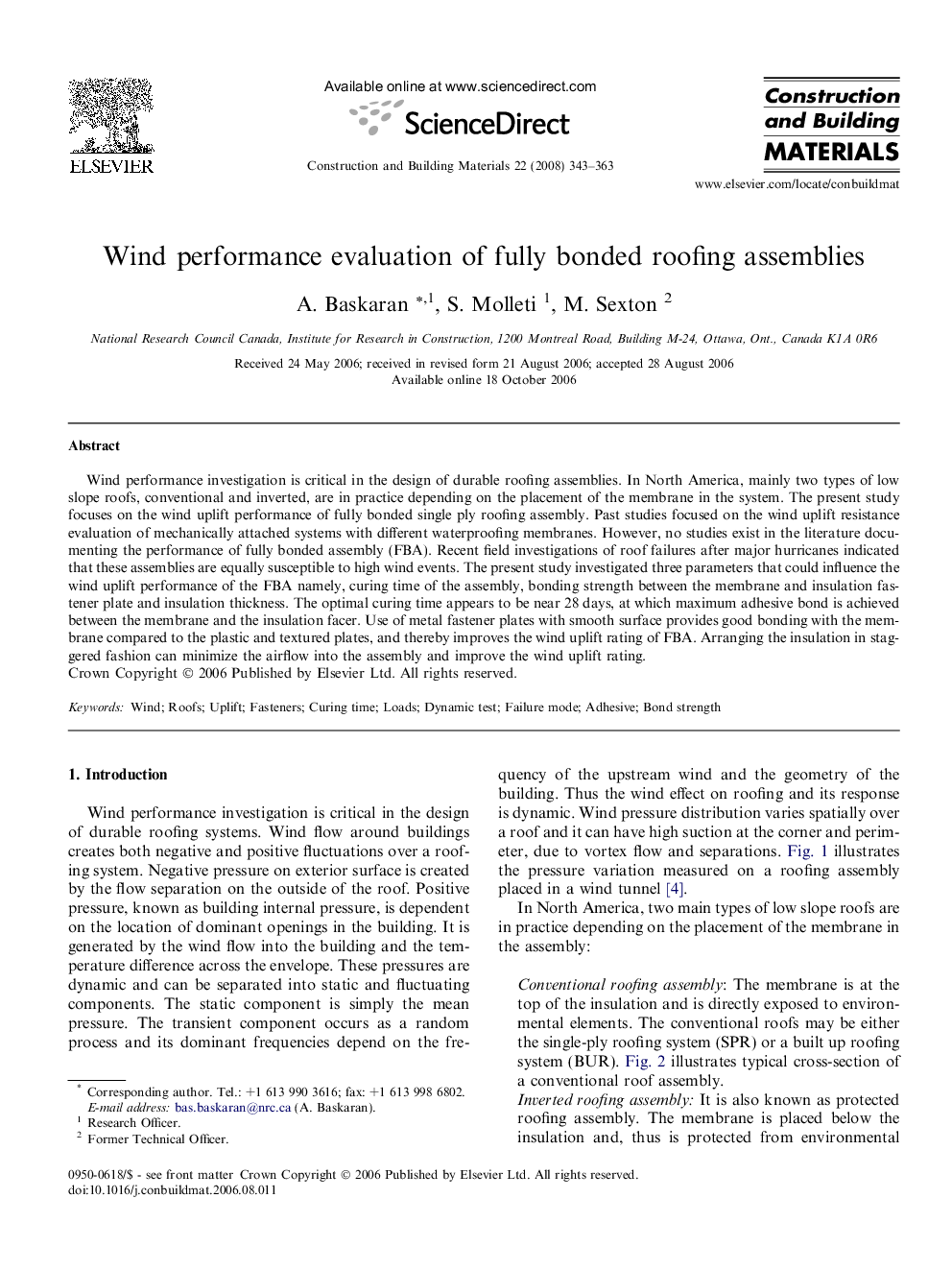| Article ID | Journal | Published Year | Pages | File Type |
|---|---|---|---|---|
| 260933 | Construction and Building Materials | 2008 | 21 Pages |
Wind performance investigation is critical in the design of durable roofing assemblies. In North America, mainly two types of low slope roofs, conventional and inverted, are in practice depending on the placement of the membrane in the system. The present study focuses on the wind uplift performance of fully bonded single ply roofing assembly. Past studies focused on the wind uplift resistance evaluation of mechanically attached systems with different waterproofing membranes. However, no studies exist in the literature documenting the performance of fully bonded assembly (FBA). Recent field investigations of roof failures after major hurricanes indicated that these assemblies are equally susceptible to high wind events. The present study investigated three parameters that could influence the wind uplift performance of the FBA namely, curing time of the assembly, bonding strength between the membrane and insulation fastener plate and insulation thickness. The optimal curing time appears to be near 28 days, at which maximum adhesive bond is achieved between the membrane and the insulation facer. Use of metal fastener plates with smooth surface provides good bonding with the membrane compared to the plastic and textured plates, and thereby improves the wind uplift rating of FBA. Arranging the insulation in staggered fashion can minimize the airflow into the assembly and improve the wind uplift rating.
